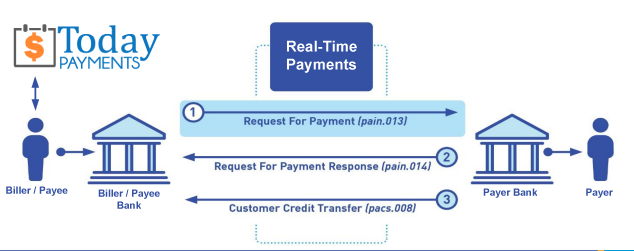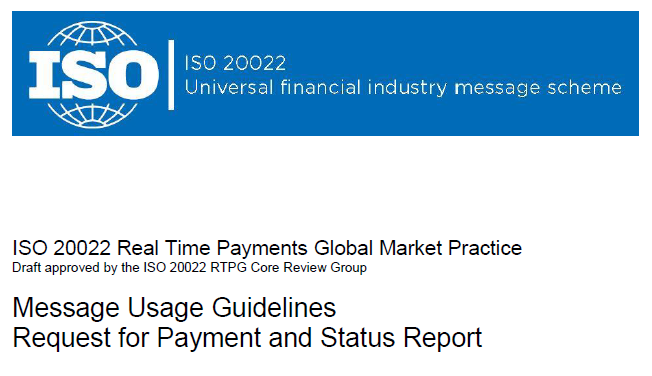

FedNow & Real-Time
Payments
Solutions
Online integrated Origination, Sending, Receiving and Recordation of all Good Funds Transfers.
"All participants receive instant real-time electronic notifications. Use our online Payment Gateway interface or integrate your in-house system with our API"
More infoCredit Card Processing
Retail Face-to-Face
Mail Order Telephone Order
eCommerce Internet Sales
eMail Invoicing
Check Processing
Online Reporting with Images
Stop Going to the Bank
Next Day Funding
Check 21 - Remotely Create Checks
Electronic Check
Best Real-Time Payments Processing For Small Business
What is Best FedNow Processing For Small Business
FedNow processing offers small businesses instant, 24/7 payment capabilities, improving cash flow and reducing payment delays. By integrating with trusted processors small businesses can securely and efficiently handle real-time transactions at a lower cost than traditional methods. Our "Good Funds" payment gateway allows for instant real-time digital payments that are immediate, irrevocable, intra-bank and/or interbank, B2B, B2C and C2B account-to-account (A2A) transfers that utilize a real-time messaging system connected to every transaction participant through all U.S.-based financial institutions.
Real-time payments (RTP) processing for small businesses through Request for Payment (RfP) is a highly efficient way to receive payments instantly, enabling better cash flow management, improved payment visibility, and enhanced customer satisfaction. RTP systems, such as the FedNow Service and The Clearing House’s RTP network, allow businesses to request and receive funds within seconds, 24/7, including weekends and holidays. When combined with the RfP functionality, small businesses can streamline their payment collection processes while providing customers with a convenient and secure way to pay instantly.
What are Real-Time Payments with Request for Payment (RfP)?
Real-time payments (RTP) involve immediate transfer of funds between two parties, where the payment is settled and funds are available within seconds. Request for Payment (RfP) is a feature that allows a business to electronically request a payment from a customer, and the customer can then approve and initiate the real-time payment through their bank or payment service provider.
RTP with RfP is particularly beneficial for small businesses because it provides faster payment processing, allows for immediate cash flow, and offers a secure and reliable payment experience for both businesses and customers.
How Real-Time Payments with RfP Work:
- Business Sends an RfP:
- The business generates an electronic Request for Payment and sends it to the customer. The RfP includes details like the payment amount, due date, and instructions for making the payment via real-time payments.
- Customer Reviews and Authorizes
Payment:
- The customer receives the RfP through their online banking platform, payment app, or other integrated service and reviews the request.
- Once reviewed, the customer authorizes the payment, which is then processed through the RTP network.
- Real-Time Funds Transfer:
- Upon authorization, the payment is processed instantly, and the funds are transferred to the business’s bank account within seconds.
- The payment status is updated in real-time, providing immediate confirmation to both the business and the customer.
- Payment Confirmation and
Reconciliation:
- Both parties receive real-time notifications of the completed payment.
- The business can automatically reconcile the payment in its accounting software, streamlining the bookkeeping process.
Benefits of Real-Time Payments with RfP for Small Businesses:
- Instant Cash Flow:
- Real-time payments ensure that businesses receive funds immediately after the customer approves the RfP. This instant access to funds can significantly improve cash flow, which is essential for managing daily expenses, payroll, or inventory purchases.
- 24/7 Availability:
- Unlike traditional ACH or wire transfers, RTP is available 24/7, including weekends and holidays. This allows small businesses to collect payments any time, reducing delays typically associated with traditional payment methods.
- Better Customer Experience:
- Customers can quickly and easily make payments through real-time channels, improving their payment experience. They benefit from knowing that the payment is processed instantly, and businesses can reduce follow-ups on overdue payments.
- Lower Payment Risks:
- Real-time payments reduce the risk of bounced checks, ACH return payments, or other payment failures, as funds are verified and transferred instantly. This improves financial certainty for small businesses.
- Reduced Costs Compared to Credit
Cards:
- RTP transactions often carry lower fees compared to credit card payments, making them a cost-effective solution for small businesses looking to minimize transaction costs while receiving payments instantly.
- Simplified Reconciliation:
- Payments are instantly confirmed and can be automatically recorded in the business’s accounting system (e.g., QuickBooks), reducing manual reconciliation efforts and improving bookkeeping accuracy.
- Enhanced Security:
- Real-time payments processed through established networks like FedNow or The Clearing House RTP come with robust security features, including encryption and real-time fraud monitoring, ensuring that transactions are safe and compliant with financial regulations.
How to Implement Real-Time Payments with RfP for Your Small Business:
- Select a Real-Time Payment Provider:
- Choose a payment provider that supports real-time payments through the RTP network or FedNow and offers RfP capabilities. Providers like Avidia Bank, Fiserv, J.P. Morgan, or The Clearing House offer RTP services with RfP functionality for small businesses.
- Integrate with Your Accounting
Software:
- Ensure that your accounting software (such as QuickBooks Online) supports real-time payment processing and can integrate with your chosen RTP provider. Many accounting systems offer plugins or API integrations to enable real-time payment collection and automatic reconciliation.
- Set Up Request for Payment:
- Configure your RTP provider or payment gateway to send Requests for Payment. This feature can be used for one-time payments, recurring billing, or on-demand payments. The RfP should be customized with your business’s branding, the payment amount, and due date.
- Send Requests and Receive Payments:
- Once set up, start sending Requests for Payment to your customers. They can approve payments through their banking app or other RTP-supported channels, and funds will be deposited into your account in real-time.
- Monitor Transactions and Reconcile:
- Use your accounting software or payment provider’s dashboard to monitor real-time payments as they come in. Real-time notifications will keep you updated on the status of payments, and they can be reconciled automatically in your bookkeeping system.
Use Cases for Real-Time Payments with RfP in Small Businesses:
- E-Commerce and Retail:
- Businesses selling online or in-store can benefit from faster payments and improved cash flow by offering customers real-time payment options at checkout or for post-purchase invoicing.
- Service-Based Businesses:
- For businesses that provide services (e.g., freelancers, consultants, contractors), real-time payments through RfP can ensure they are paid immediately after delivering services, reducing the wait time for invoices to clear.
- Subscription-Based Models:
- Small businesses offering subscriptions or memberships can automate the payment collection process using RfP, ensuring timely and consistent payments from customers.
- B2B Transactions:
- Real-time payments are ideal for B2B transactions where timely payments are essential for maintaining business operations and vendor relationships. By using RfP, businesses can request and receive payments quickly, avoiding delays that might affect cash flow or supplies.
- Payroll Processing:
- Small businesses can use RTP with RfP to process payroll in real time, especially for on-demand or gig workers, ensuring that employees receive payments instantly without waiting for traditional payroll cycles.
Key Considerations:
- Transaction Fees:
- While real-time payments often have lower fees than credit card processing, there are still costs associated with RTP. Make sure you understand the fee structure of your RTP provider, which may charge per transaction or based on volume.
- Transaction Limits:
- Some RTP systems may have transaction limits. Ensure the limits fit your business needs, especially if you handle high-value transactions.
- Customer Adoption:
- Make sure your customers are aware of the option to pay through real-time payments, as not all customers may be familiar with this method. Educating your customers about the benefits of RTP (e.g., instant payments, lower fees) can encourage adoption.
- Security and Compliance:
- Ensure your payment provider follows industry standards for security, including encryption, tokenization, and real-time fraud detection, to protect your business and customer data.
Conclusion:
Real-time payments processing for small businesses through Request for Payment (RfP) is a powerful tool for improving cash flow, reducing payment delays, and enhancing the overall payment experience. With the ability to receive funds instantly and 24/7, small businesses can better manage their finances while providing a more convenient and efficient payment option for their customers. By choosing the right RTP provider and integrating it with your existing systems, you can leverage the benefits of real-time payments to grow and streamline your business.
Creation Request for Payment Bank File
Call us, the .csv and or .xml Real-Time Payments (RTP) or Request for Payment (RfP) file you need while on your 1st phone call! We guarantee our reports work to your Bank and Credit Union. We were years ahead of competitors recognizing the benefits of RequestForPayment.com. We are not a Bank. Our function as a role as an "Accounting System" in Open Banking with Real-Time Payments to work with Billers to create the Request for Payment to upload the Biller's Bank online platform. U.S. Companies need help to learn the RfP message delivering their bank. Today Payments' ISO 20022 Payment Initiation (PAIN .013) shows how to implement Create Real-Time Payments Request for Payment File up front delivering a message from the Creditor (Payee) to it's bank. Most banks (FIs) will deliver the message Import and Batch files for their company depositors for both FedNow and Real-Time Payments (RtP). Once uploaded correctly, the Creditor's (Payee's) bank continues through a "Payment Hub", will be the RtP Hub will be The Clearing House, with messaging to the Debtor's (Payer's) bank.

... easily create Real-Time Payments RfP files. No risk. Test with your bank and delete "test" files before APPROVAL on your Bank's Online Payments Platform.
Today Payments is a leader in the evolution of immediate payments. We were years ahead of competitors recognizing the benefits of Same-Day ACH
and Real-Time Payments funding. Our business clients receive faster
availability of funds on deposited items and instant notification of
items presented for deposit all based on real-time activity.
Dedicated to providing superior customer service and
industry-leading technology.


1) Free ISO 20022 Request for Payment File Formats, for FedNow and Real-Time Payments (The Clearing House) .pdf for you manually create "Mandatory" (Mandatory .csv or .xml data for completed ISO 20022 file) fields, start at page 4, with "yellow" highlighting. $0.0 + No Support
2) We create .csv or .xml formatting using your Bank or Credit Union. Using your invoice information database to create an existing Accounts Receivable file, we CLEAN, FORMAT to FEDNOW or Real-Time Payments into CSV or XML. Create Multiple Templates. You can upload or "key data" into our software for File Creation of "Mandatory" general file. Use either the Routing Number and Account Number for your Customers or use "Alias" name via Mobile Cell Phone and / or Email address.
Fees = $57 monthly, including Activation, Support Fees and Batch Fee, Monthly Fee, User Fee. We add your URI for each separate Payer transaction for additional Payment Methods on "Hosted Payment Page" (Request for file with an HTML link per transaction to "Hosted Payment Page" with ancillary payment methods of FedNow, RTP, ACH, Cards and many more!) + $.03 per Transaction + 1% percentage on gross dollar file,
3) Add integrating QuickBooks Online "QBO" using FedNow Real-time Payment using our Best FedNow Processing For Small Business system.
Fees Above 2) plus $29 monthly additional QuickBooks Online "QBO" formatting, and "Hosted Payment Page" and WYSIWYG
4) Above 3) plus Create "Total" (over 600 Mandatory, Conditional & Optional fields of all ISO 20022 Pain .013) Price on quote.
Each day, thousands of businesses around the country are turning their transactions into profit with real-time payment solutions like ours.
Contact Us for Request For Payment payment processing

